Taking on Future Social Issues through Open Innovation
Materials Science for Achieving Green Innovation
To create a sustainable society, the development of revolutionary energy conversion technologies that achieve green innovation is becoming an urgent task. In response, Hitachi is developing thermoelectric modules and materials that can exploit unutilized thermal energy and convert it into electric power. In particular, Hitachi is developing thermoelectric module technology and iron-based thermoelectric materials that can utilize more than 70% of the unutilized heat from low-temperature waste heat under 200°C. It is also developing non-toxic and low-cost silicon-based thermoelectric materials that enable electric power regeneration from mid- to high-temperature exhaust gas of approximately 500°C, such as the exhaust gas from vehicles.
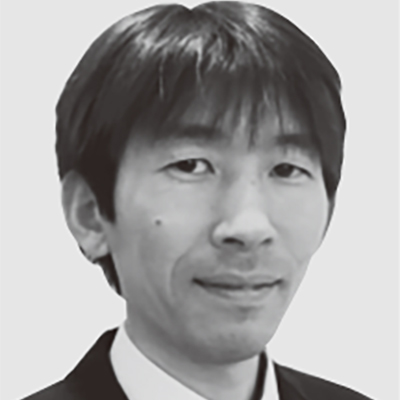
Center for Exploratory Research, Research & Development Group, Hitachi, Ltd. Current work and research: Research and development of energy conversion materials, devices, and their application. Society memberships: The Thermoelectrics Society of Japan (TSJ), The Japan Society of Applied Physics (JSAP), and The Magnetics Society of Japan (MSJ).
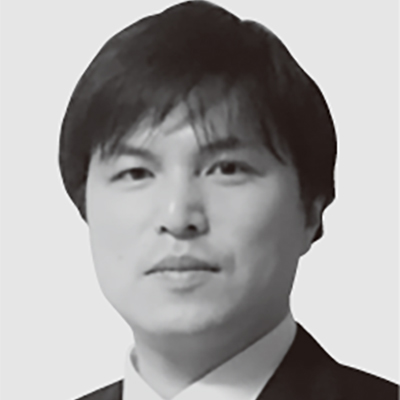
Center for Exploratory Research, Research & Development Group, Hitachi, Ltd. Current work and research: Research and development of thermoelectric materials. Society memberships: TSJ and JSAP.

Center for Exploratory Research, Research & Development Group, Hitachi, Ltd. Current work and research: Research and development of thermoelectric materials. Society memberships: The Physical Society of Japan, TSJ, and MSJ.
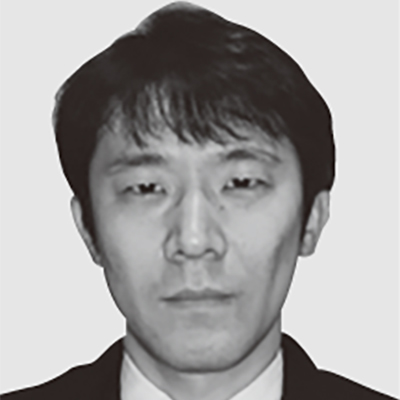
Center for Exploratory Research, Research & Development Group, Hitachi, Ltd. Current work and research: Research and development of thermoelectric materials. Society memberships: TSJ and JSAP.

Information Electronics Research Department, Center for Technology Innovation – Electronics, Research & Development Group, Hitachi, Ltd. Current work and research: Research and development of thermoelectric devices and microelectromechanical systems. Society memberships: TSJ and JSAP.
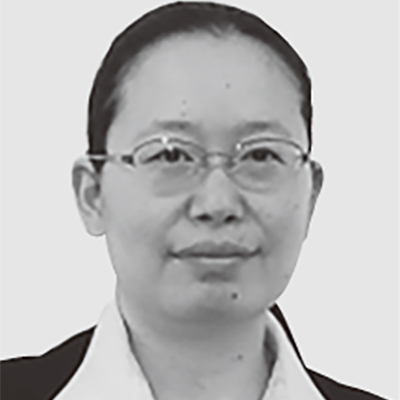
Thermal Fluidic Systems Research Department, Center for Technology Innovation – Mechanical Engineering, Research & Development Group, Hitachi, Ltd. Current work and research: Research and development of heat transfer engineering. Society memberships: The Japan Society of Mechanical Engineers and the Illuminating Engineering Institute of Japan.
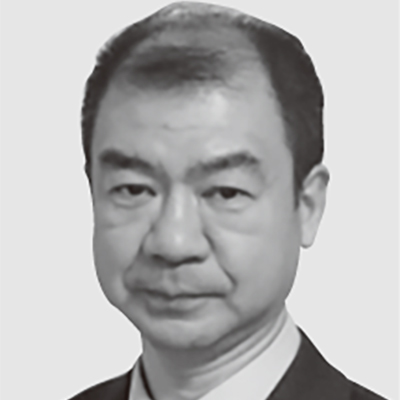
Thermal Fluidic Systems Research Department, Center for Technology Innovation – Mechanical Engineering, Research & Development Group, Hitachi, Ltd. Current work and research: Development of absorption chillers, heat pumps, and thermal management technologies for renewable heat energy. Society memberships: The Society of Heating, Air-Conditioning and Sanitary Engineering of Japan, the Japan Society of Refrigerating and Air Conditioning Engineers, and the Japanese Sub-Committee of IEA/EBC/Annex63.
With the trend toward improving energy efficiency and conserving the Earth's resources and environment picking up pace around the world, there is a need to use energy more efficiently and to exploit unutilized thermal energy, as well as to develop energy technologies with low carbon dioxide (CO2) emissions to help prevent global warming. Hitachi is developing innovative energy conversion materials that facilitate work on such green innovation.
This article describes an example of the application of thermoelectric modules, which convert unutilized thermal energy into electric power, to low-temperature wastewater from gas cogeneration. It also describes iron-based and silicon-based thermoelectric materials that have been developed for the purpose of increasing the efficiency and reducing the costs of thermoelectric modules.
Figure 1—Thermoelectric Module
 The module is constructed with p-type and n-type thermoelectric materials that are connected in series via electrodes, and generates voltage in the direction opposite to the direction of the temperature difference between its upper and lower surfaces.
The module is constructed with p-type and n-type thermoelectric materials that are connected in series via electrodes, and generates voltage in the direction opposite to the direction of the temperature difference between its upper and lower surfaces.
Thermoelectric conversion is a method of generating electric power by the direct conversion of thermal energy into electrical energy using the Seebeck effect, which generates power from the temperature difference across a thermoelectric semiconductor. Prompted by the problems associated with rising energy consumption, including the scarcity of fossil fuels and global warming caused by CO2, there has been interest in recent years in thermoelectric modules that can recover industrial or automotive waste heat (from low temperatures below 200°C to high temperatures of around 500°C) that has gone unused up until now.
Made of p-type and n-type thermoelectric materials connected in series via electrodes, a thermoelectric module generates electric power in response to the temperature difference between its upper and lower surfaces (see Figure 1). Here, the conversion efficiency of the thermoelectric module is determined by the dimensionless figure of merit ZT (Z = S2/ρκ, where S = Seebeck coefficient, ρ = resistivity, κ = thermal conductivity, and T = temperature) of the elements that are used. For example, being able to achieve a value of ZT = 1 to 2 can improve engine fuel efficiency by 1% to 5%, so there is a need to develop materials with a high ZT.
This section describes power generation in terms of applying a thermoelectric module to a cogeneration system.
A cogeneration system uses fuel such as gas and supplies electric power from the engine and hot water generated from the engine waste heat. However, in many use cases, low-temperature water below 80°C is discarded without being utilized fully. In response, Hitachi tested the conversion of unutilized hot water (below 80°C), generated by cogeneration, into high demand electric power.
Figure 2 (a) shows the relationship between output P, heat flow Q, and temperature difference δT applied to the thermoelectric module when the unutilized hot water from cogeneration is used as a heat source in a thermoelectric module. P varies according to the temperature difference δT that is applied to the thermoelectric module. The thermal resistance R between the thermoelectric module and the heat source varies according to the flow paths and mounting materials. For this reason, the hot water and cold water flow paths were designed to reduce their thermal resistance and enable δT to be increased. A fin structure was created inside the flow paths to reduce the thermal resistance from the liquid inside the flow paths to the thermoelectric module, and the flow path structure was determined by performing a one-dimensional heat transfer calculation(1). Figure 2 (b) shows the results of thermal fluid analysis based on a structure consisting of 20 thermoelectric modules, showing a flow rate with a high quantity of heat exchange and low pressure loss.
Figure 3 shows the dependency that the thermoelectric module voltage has, as measured using the designed flow paths, on the hot water and cold water temperature difference ΔT. Higher output voltage was obtained by applying flow paths that have an internal fin structure in comparison with conventional flow paths that do not have such a structure, and an output equivalent to a maximum of 600 W/m2 at a temperature difference of ΔT = 53.5°C was confirmed. To achieve further output increases, Hitachi is developing new high-performance thermoelectric materials that are both low cost and non-toxic.
Figure 4—Seebeck Coefficient of Fe2TiSi Thin Film
 The Seebeck coefficient is increased by substituting V for Ti and Al for Si.
The Seebeck coefficient is increased by substituting V for Ti and Al for Si.
This section describes an iron-based full Heusler alloy, which is one of the candidate low-cost, non-toxic, and high-performance thermoelectric materials for low temperatures. The iron-based full Heusler alloy is being developed for mounting on a high-efficiency thermoelectric module which uses low-temperature unutilized heat, as described in the previous section.
The iron-based full Heusler alloy, written as Fe2XY (Fe: iron), gains its thermoelectric performance from its crystal structure, in which each element is ordered based on a body-centered cubic lattice. In this material system, the valence electron concentration (VEC), derived by dividing the sum of the valence electrons of the structural elements by the number of atoms inside the unit crystal lattice, is modified by substitution of other elements and adjusted so that the VEC is approximately 6. This increases the Seebeck coefficient, which is the elemental physical property value of ZT(2). From the approximately 100 element types that Hitachi identified through previous first-principles calculations, it identified Fe2TiSi, with titanium (Ti) used for X and silicon (Si) used for Y, as a candidate component with a high Seebeck coefficient(3).
In this research, to test how to increase the Seebeck coefficient, the VEC was adjusted to VEC≈6 using an Fe2Ti (V) Si (Al) thin film. This thin film was developed from an Fe2TiSi thin film by substituting vanadium (V) for Ti and aluminum (Al) for Si; V has one more valence electron than Ti and Al has one less valence electron than Si. Figure 4 shows the plotted results for the Seebeck coefficient of the Fe2TiSi thin film, with substitution of V and Al, against the VEC. With substitution of only V or Al, the VEC of the Fe2TiSi thin film (△ and □ data in the figure) ranges from 6.04 to 6.10, and the Seebeck coefficient is -100 µV/K. With substitution of both V and Al, the VEC decreases to 6.01, which increases the Seebeck coefficient to -160 µV/K (○ data in the figure). Although this Seebeck coefficient is the highest level achievable for an iron-based full Heusler alloy, the material figure of merit of ZT = 1, which is required for practical use, may be exceeded if thermal conductivity reaches 4 W/Km(4).
In the future, Hitachi will proceed with developing bulk materials that can be mounted in thermoelectric modules.
The previous section described thermoelectric modules and thermoelectric materials designed to utilize low-temperature unutilized heat. However, in response to stricter regulations worldwide for vehicle fuel consumption in recent years, it has also become necessary to develop technologies for utilizing vehicle waste heat in the mid- to high-temperature range (300 to 500°C) using thermoelectric modules. Enabling vehicle applications will require high performance thermoelectric materials that exceed ZT = 2 and thermoelectric modules that have high heat resistance and high reliability.
This section describes the bulk synthesis of silicide materials(5), which are noted for their low cost and low environmental impact, and the search for new composite silicides that have performance exceeding conventional silicides, for the purpose of application in thermoelectric modules designed for medium to high temperatures.
Previously, Hitachi has produced nanocomposite material thin films, consisting of higher manganese silicide (MnSi1.7) and Si, that demonstrate low thermal conductivity, below the 1 W/Km required for achieving ZT = 2(6). In this research, Hitachi tested the use of nanocomposite bulk synthesis as the form for mounting in thermoelectric modules.
First, manganese (Mn) and Si were pulverized together with a precursor powder into a powdered alloy using the mechanical alloying (MA) method. Then, the alloy was sintered using the spark plasma sintering (SPS) method. Figure 5 (a) shows the results of crystal structure identification using powder X-ray diffraction after MA processing and SPS processing. For both powders, strong MnSi1.7 diffraction peaks (●) and Si diffraction peaks (▲) were observed, and there was no heterogeneity. Also, Figure 5 (b) shows the results of microstructure observation by transmission electron microscopy (TEM) of the bulk sample after SPS processing. From the image, it can be seen that the nanostructure is formed from grains that range in size from 50 nm to 200 nm. In addition, in the same figure, from inset images (A) and (B), which show an enlarged TEM image and an electron diffraction image, it can be seen that the grains have crystallized. These results demonstrate that the synthesis of a nanocomposite bulk consisting of MnSi1.7 and Si is possible.
Figure 5—X-ray Diffraction (a) and Electron Microscope Image (b) of MnSi1.7/Si Composite Material
 The observable MnSi1.7 diffraction peaks (●) and Si diffraction peaks (▲) show that a MnSi1.7/Si nanocomposite material has formed.
The observable MnSi1.7 diffraction peaks (●) and Si diffraction peaks (▲) show that a MnSi1.7/Si nanocomposite material has formed.
Next is a description of the search for new composite silicide materials that have performance exceeding conventional silicide thermoelectric materials. Up to now, a wide variety of semiconductors, such as magnesium silicide (Mg2Si) and the MnSi1.7 described above, have been used as high-performance silicide materials. The performance of thermoelectric materials is strongly dependent on the electronic state of the material. Therefore, in this research, the electronic states of silicide materials with diverse compositions and elements were analyzed using first-principles calculations and the corresponding ZTs were evaluated. In the results, Ca3Si4 was identified as a new silicide material that has high ZT performance.
Figure 6—(a) Crystal Structure of Ca3Si4 and (b) Carrier Concentration Dependence Calculation for the ZT of Ca3Si4
 ZT can be increased to 1.5 by refining the grain size of Ca3Si4 to 10 nm.
ZT can be increased to 1.5 by refining the grain size of Ca3Si4 to 10 nm.
Figure 6 (a) shows the crystal structure of Ca3Si4, which has a crystal structure where Si forms complex bonds. Therefore, it is expected that propagation will be restricted within the phonon crystal lattice, which is the thermal conduction medium, reducing lattice thermal conductivity. Because highly complex computations are required for this calculation, the K computer was used, and showed that actual lattice thermal conductivity could be reduced to 1 W/Km or less(7). Furthermore, Figure 6 (b) shows the results of an evaluation of the dependency of carrier concentration on the ZT of Ca3Si4 that was calculated from the electrical conductivity and Seebeck coefficient using the Boltzmann transport equation. It was found that ZT = 1 could be achieved by setting the carrier concentration to approximately 1020/cm-3. Also, by refining the grain size to 10 nm and reducing thermal conductivity by increasing phonon scattering at grain boundaries, ZT could be increased to 1.5.
In the future, Hitachi will continue to develop materials with the objective of the practical use of thermoelectric materials, using a variety of additives and composition optimizations to search for silicide thermoelectric materials that can achieve ZT > 2.
This article has described an example of applying thermoelectric modules that convert unutilized thermal energy into electric power to the low-temperature wastewater from gas cogeneration, an iron-based full Heusler alloy, and silicide-based thermoelectric materials that have been developed with the aim of increasing the efficiency and reducing the costs of thermoelectric modules.
In the future, Hitachi will continue aiming to achieve a green innovation society by making further performance improvements in thermoelectric modules and thermoelectric materials.
Some results in this article were obtained in work commissioned by the New Energy and Industrial Technology Development Organization (NEDO).